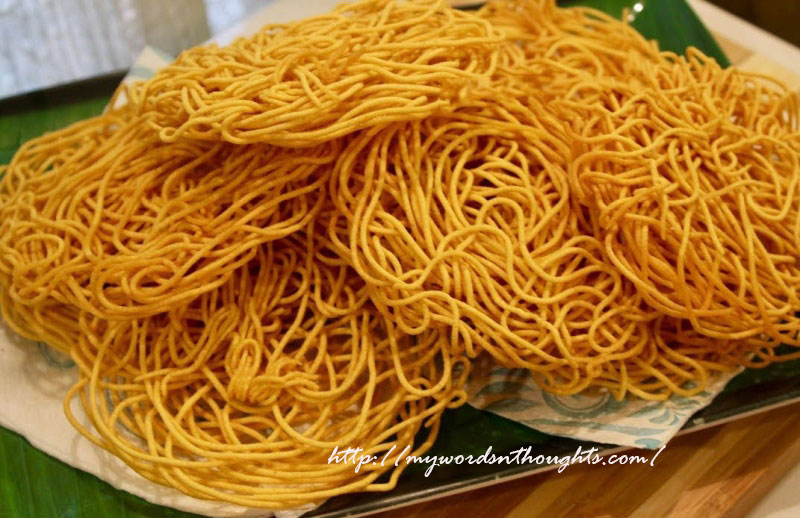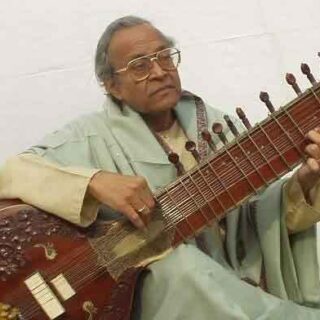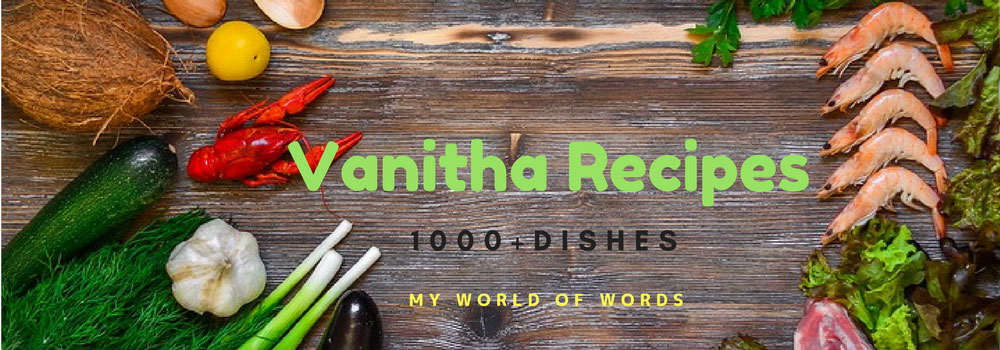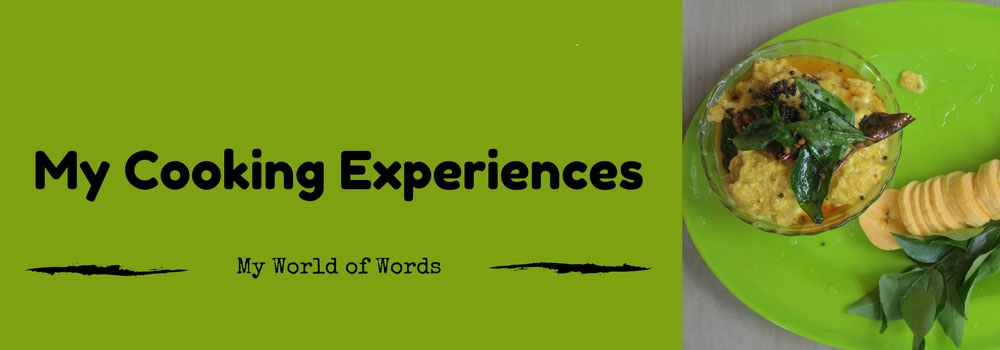Do you know about the tradition of Melpuram Snacks?
Melpuram village – a part of Kanya Kumari district was once a part of Kerala, ruled by Travancore kings in the pre-independent era. Now it forms a part of Tamil Nadu, near to Marthandam and Nagercoil in Kerala border. What’s special about Melpuram? Once upon a time it was known as ‘Palahaara gramam’ or ‘Village of snacks’. Traditional snacks prepared by homes which do it as an occupation, following family tradition for many generations. There was a time when people used to come here from distant places to buy snacks. Word of mouth publicity played an important role in this case. But sadly those days have gone, village has changed a lot and Melpuram Snacks with its own distinct flavour and taste are already diminishing, when people associated with it have started taking other professions for their livelihood. Yet you can still find here a few families which still follow the tradition.

What’s the connection between Melpuram Snacks and Travancore kings?
It happened almost a century back when Travancore kings ruled Kerala and Padmanabhapuram near Thuckalay (now a part of Tamil Nadu) was state capital. In those days kings used to travel in chariots through the local streets of Melpuram to reach Thiruvananthapuram to pray at Padmanabhapuram temple and other purposes. Those long distant travels through local paths were not easy those days and it took a lot of time. So, occasionally they used to take rest at side paths or small shelters before they proceed. In those days rest houses were not so common.
In one such occasion someone told the royal family about the popularity of Melpuram Snacks. They got interested and tasted a few, and liked it very much. Those snacks were entirely different in taste and flavour and king got smitten and surprised. Later he gave a proclamation that this taste should be preserved so that its fame should spread far wide beyond boundaries. As declared, a few steps were taken for the perseverance of Melpuram Snacks. It became a procedure to buy snacks from Melpuram by the royal family during festival occasions like Vishu and Diwali, and its prosperity spread far wide.
These are very old stories, and present generation of Melpuram are unaware of it. Those narrow paths have now become tarred roads. People began to forget the taste of Melpuram Snacks, when snacks became commonly available in every local street of Kerala and Tamil Nadu borders. Slowly Melpuram village faded from people’s memory along with departed people and new generations flourished.
To reach Melpuram village, you need to take Thiruvananthapuram – Nagercoil NH route. From Kuzhutharai bus stop and travel 5 kms left to reach Melpuram. Though it’s a part of Tamil Nadu, you can also find Malayalam speaking Malayalis or Tamilians here. Now small streets have joined together to form a small town like space with dense population.
Melpuram Snacks had the same fate as other traditional occupations

Preparing Chuttu Murukku
When more people turned educated, they left their traditional occupations and moved forwards with white collar and corporate jobs. It happened with Melpuram snacks too. When other jobs give more income, why not to try those ones, instead of spending the whole day and night beneath hot hearths and smoky hot oil?
Though many families don’t follow it traditionally, they make it at kitchen for special occasions. Old taste and odour are retained in this case. It’s solely because of tradition and procedure followed by many generations, and passing it to newer ones. Yet the happy part is that there still exists a few families here, those have been following this traditions for four generations or more.
Melpuram, Vattavila, Attoor and Kollengode – there are a few families in these places who still follow family traditions and take it as profession. In most cases, all members of a family worked jointly. Children also provide small helps. Nowadays members of Kudumba Shree also help them. They also market and sell the snacks as groups.
Traditionally Veera Shaiva community is associated with snacks. It’s only a minor community and they live as joint families. So they might be concentrated at any particular area of the village and work together as a group. That’s why their snack shops are seen in a row.
Melpuram snacks are in 9 varieties
Murukk, Munthirikuthu, Achappam, Neyyappam, Pakkavada, Karachev, Omapodi, Kali Odaykka and Boli are those 9 snacks normally available here. Boli is usually prepared based on order. In Thiruvananthapuram district, Boli is an integral sweet dish served along with Vermicelli Payasam in traditional Sadyas.
Karachev and Omapodi are used in mixtures. Both are separately added in mixture. Omapodi is quite similar to Sev in appearance and method of preparation. Murukk is a very common snack of south India. Yet Melpuram Murukku owns a distinct taste and colour. It’s because of the ingredients used and temperature at which Murukk is fried. Chuttu Murukku and Mullu Murukku are quite common. But that’s not the case of Laami Murukk/Lami Murukk. It’s different in shape and taste, and resembles a big plate or lid of Laami shape.

Let me add here, Laami is a circular lid made using palm leaves manually and usually used to close cooked rice. After starch water is strained from cooked rice, Laami is used to close the rice pot. There is equal space between the palm strands which helps steam to easy escape from rice, with lid closed. I am not sure if Laami is used in other parts of Kerala, or if it exists (existed) in any other name. During my childhood days I have seen my mother and maternal grandmother from Tamil Nadu using Laami to cover rice pot, and it was an integral item of kitchen, just like Uri (to hang food items in pots) or Thuduppu (used to smash tapioca). Sadly all these items have gone from kitchen as well as memories of Malayalis. Very soon I am going to submit a post on some such faded memories of old Kerala kitchen.
Let me continue with Laami Murukku. Laami Murukku resembles very much to Laami in shape, and hence this name. (I have seen Laami in Kanyakumari district of Tamil Nadu, and known by the same name). A special mould is used to prepare Laami Murukku, and a single Murukku may cost up to 100 rupees.
Snacks are mandatory for Seemantam ceremony
Pregnant ladies are always treated special, and 4th and 7th months are auspicious, associated with a few customs. Relatives visit her with snacks (number of items usually represents the pregnancy month) and is locally known as ‘Seemantham Valakaapp’, ‘Vayaru Kaanal’, ‘Ariyipp’ etc. Laami Murukku is very special for this ceremony. If it’s fourth month of pregnancy, 4 different snack items are placed inside a Laami Murukk and given to the lady to taste. If it’s 7th month, 7 items will be placed inside a single Laami Murukku. Not only that, Laami Murukku is specially gifted to friends and relatives on festival occasions such as Diwali, Christmas etc.
Same is the case of Munthirikothu (a sweet snack made using roasted green gram and coconut) which is a part of all Seemantham ceremonies in southern Kerala as well as Kanyakumari district of Tamil Nadu. The trade secret is the perfect method of preparation. It can stay fresh for a month or may easily damage within 4 days if not properly prepared.
Melpuram snacks are gift packets to foreign countries
Now people are not addicted to oily snacks because of life style diseases, and use in a controlled way only. When they reach 50, they usually suffer from diabetics, cholesterol etc, and hence can’t consume snacks. Earlier people used to do a lot of manual work, and hence excess calories used to be burned easily. But it’s not the case now. With the popularity modern bread and non-vegetarian snack items, these traditional snacks have comparatively less demand.
In Melpuram snack production is like a small-scale industry, mostly done at homes or as a group. So snacks are not prepared in large scale. Even bakeries are scarce of Melpuram snacks. As there is no intermediate seller in this business, these snacks are comparatively cheap. Many visitors from Kerala and Tamil Nadu usually return with Melpuram snacks. Very often, labourers from Bengal and North India also reach here to buy snacks because of its distinct taste.
Though snacks are not imported in large scale, they definitely form a part of gift packets to loved ones who stay in foreign countries. Many people, on their return after vacation buy Melpuram snacks and take them to other countries. People often return back to purchase it for next vacation.
How long can this tradition survive?
Malayalis are comparatively more in the village than Tamilians. Majority of buyers too are Malayalis. Yet the heritage is currently preserved by government of Tamil Nadu, as this village is a part of it (earlier a part of Travancore, Kerala). Small scale manufacturing units are promoted by Tamil Nadu government to support this tradition. Panchayat gives a separate license to each family associated with this profession. But it’s not sure, for how many generations this tradition will actually survive!
Some people are almost sure that the tradition will end with their death, because their kids have already taken a new profession. Younger generation is not much interested in this profession. They can’t be blamed too. Shooting price hikes for rice, oil and other ingredients is yet another issue to sort with. They can’t increase prices of prepared snacks accordingly. If so they may loss customers.
Sometimes they prepare snacks based on orders. If so they may have tireless nights under hot oil and steam to complete the order for next day. Yet you can find many people fully satisfied to follow this tradition.
A few decades back, festival season of Melpuram begins a few days before the actual festival season. It’s the festival of taste, where customers used to arrive here day and night to purchase snacks for upcoming festival. Kerosene lamps used to be lighted at nights, which stay so with eyes open till early dawn. All family members will be fully engaged in preparing snacks, just like a family get-together cracking jokes and involved in hobbies, day and night. Those days have already faded from memories. Now bakeries are available in all corners, and who would care for such traditional snacks! Yet during Onam and Vishu seasons, some families are fully involved in snack making day and night, a few reminiscences of glorious past.
Before I conclude, let me give a few secret recipes of Melpuram snacks
As I am a native of Thiruvananthapuram district, close to Tamil Nadu border, I am familiar with all the dishes described above. As I said earlier, during my childhood days of 1980s and 1990s, these snacks were quite common in our villages for ceremonies and functions, though now puffs, sandwiches and buglers have already reached remote places.
Recipe for Omapodi

Ingredients for Omapodi:
1. Gram flour – ½ kg
2. Chilli powder – 2 big spoons
3. Asafoetida powder – 2 small spoons
4. Pori Kaaram – 1 spoon (I think it’s baking soda used for making Appam, and I am not sure I have translated it right)
5. Cumin powder – 1 spoon
6. Sesame seeds powdered – 2 spoons
7. Salt – as required
8. Oil (groundnut oil, palm oil, coconut oil or any other oil of your choice) – ½ kg
9. Curry leaves – a stalk
Method of preparation of Omapodi:
1. Add salt to gram flour and mix well.
2. Add chilli powder, asafoetida powder, turmeric powder, baking soda, cumin powder and sesame powder.
3. Mix the contents, add a little water and prepare thick batter (similar to idiyappam).
4. Heat oil and add curry leaves.
5. Take fried curry leaves and keep aside.
6. Using an Idiyappam squeezer, squeeze batter into hot oil in circular fashion, two or three times till batter completely immerse in oil.
7. When one side is fried, flip it once as a single piece and fry the other side too.
8. Use a tissue paper to remove excess oil, and sprinkle crushed curry leaves fried.
Note: You can use this snack as a single piece or crush it. If so it’s called Omapodi, which is usually used in mixtures. In some places, Omapodi is used to prepare Payasam. I would like to add a bit piece of information. In some online videos I have noticed that ajwain (ayamodakam in Malayalam and omam in Tamil) soaked in warm water for a while is also added while preparing batter. I made a wild guess. It’s definitely a part of Tamil cuisine. Perhaps this snack might have got this name because of adding Omam (ajwain) extract to the ingredients! Who knows!
Munthiri Kothu
This snack resembles a bunch a grapes and hence the name. It’s an integral snack item during Seemantham ceremony (given to pregnant ladies as a part of ceremonies) in our places, and is often prepared to be send to newly wedded brides or her ancestral home soon after marriage. If you strictly follow this recipe, it can be kept for almost one month. It’s prepared as a bunch of 25, 50 or 100 balls. Surprised? Though Munthiri Kothu looks like Sukhiyan or Modakam in external appearance, it is actually a sweet snack prepared using green gram and jaggery.

Ingredients for Munthiri Kothu:
1. Coconut oil/Palm oil – 1 kg
2. Green gram – 1 kg
3. Coconut – 2
4. Jaggery – 1 kg
5. Dried ginger (Chukku) – 50 gm
6. Cardamom – 25 gm
7. Rice flour – ½ kg
8. Kesari powder (artificial colour) – A pinch
How to prepare Munthiri Kothu?
1. Dry fry green gram, cardamom and dry ginger and make a coarse powder similar to Putt powder (never make it a fine powder).
2. Finely scrap coconut, fry it and blend it once in a mixer. (Munthiri Kothu stays long if you fry coconut perfectly).
3. Mix the above two items, add jaggery and mix well. Melting jaggery should not form lumps in the flour.
4. Now make small balls from the above mixture.
5. Add a little water to rice flour, mix well and add a little salt and kesari powder.
6. Use a broad pan for preparing Munthiri Kothu. Heat oil.
7. Deep each ball in rice batter and put in hot oil. Put balls in such a way that they are attached to one another just like a bunch of grapes.
8. When one side is fried, flip it once and fry other side as well.
9. Take it as a single piece from oil and remove excess oil.
Note: While putting balls in hot oil, put first one in the centre and then around it in a circular pattern. You can continue the process till the whole surface of pan is almost filled. If you use palm oil instead of coconut oil, Munthiri Kothu stays fresh for long days.
Kaaraponthi
This snack resembles boondi, though it’s not sweet. For this snack, batter is prepared exactly the same as Omapodi. Add a little more salt and water. Separate spatulas and bowls are available to pour this batter drop by drop into hot oil. Each drop converts to one Kaaraponthi, and you can find similar ball like structures while eating normal mixture. There is a procedure to make tasty payasams and pradhamans using Kaaraponthi in different parts of Travancore. In some areas for marriage sadyas, along with boli, palada (or kheer) and Kaaraponthi are also served.
End note: I would like to add a bit piece of information from my life. My second maternal uncle married from Melpuram. It was in the early 1990s when I was still a child, when they got married. I think 1991. Since then I am familiar with Melpuram and its snacks. But aunt’s family is not associated with it. In the main centre itself you can see an array of snack shops on either side of road, and people are busy with preparing snacks. But what I dislike is, prepared snacks are kept for open display on either side of road where people and vehicles are passing by. I think it’s very unhygienic. I don’t know if they keep them just for display, while provide customers with hygienic items kept under wraps. I am sharing my childhood memories. It has been a long time I have gone to my aunt’s home, and I am not sure enough if those things have changed. Hopefully they wrap prepared snacks with covers now!
Also read a few more posts related to Kerala cuisine. Here is the page link. Click on the images to read













Recent Comments